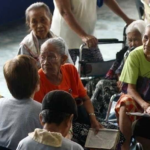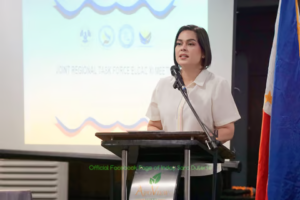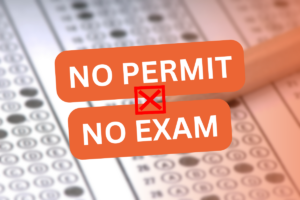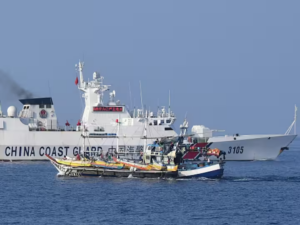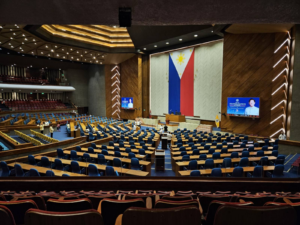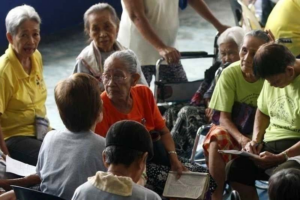
A naughty Grade 5 pupil asked his science teacher if there is earthquake on the moon? The teacher posed for a moment and said “yes, there is earthquake on the moon just like we have earthquakes here.” The boy smiled sheepishly and said, “You are wrong Ma’am, there is ‘moonquake’ on the moon and not earthquake.”
Can you still remember the earthquake that toppled down the Ruby Tower in Manila in 1968? How about the earthquake that hit Baguio City that crushed the enormous Hyatt Hotel like a broken accordion? Or the strong earthquake that caused a huge tsunami that killed thousands of people in Cotabato City? Some people who happened to be at the wrong place at the wrong time can probably remember these incidents by heart.
But of course it is still vivid in our memory the damage wrought by Typhoon Yolanda in Tacloban City and Eastern Visayas in 2013, Typhoon Pablo that hit Eastern Mindanao in 2012, and Typhoon Sendong in Cagayan de Oro a year earlier. I can go on and on and I am sure the names of these tropical storms may somehow ring a bell in the depth of the consciousness of those who have experienced them.
The people of Barangay Andap, New Bataan, Compostela Valley Province (now Davao De Oro) for instance could not forget the night of December 3, 2012 when their entire barangay was washed out by a gigantic tornado brought about by Typhoon Pablo, (also internationally called tropical storm Bopha). The whirlpool left hundreds of people dead or missing and billions of peso worth of properties and corps damaged.
Psychologists say people usually remember two events in their lives; the happiest one and the most tragic one. But why can’t we not easily recall tragic earthquakes that also caused enormous damage and deaths in the country? My answer is; we cannot identify them by name.
Before the imposition of the enhanced community quarantine (ECQ) lockdown that literally puts us all in our virtual “cells,” the country was jolted by a series of earthquakes, particularly in Southern Mindanao. From October 2019 to February 2020, about nine strong earthquakes with magnitudes ranging from 6.1 to 6.9 on Richter Scale hit the cities of Davao, Digos, Kidapawan and parts of the provinces of Davao Occidental and Maguindanao and their municipalities and barangays causing billions of damage to property and a number of deaths. This is not to mention the earthquakes caused by the eruption of Taal Volcano in the province of Batangas in the early part of 2020.
Thousands of families evacuated from their homes due to unending aftershocks in Southern Mindanao and the rain of dust from the raging Taal Volcano. They occupied the headlines and media stories nationwide for months. A national disaster was called, meaning that local authorities could not cope with the calamity thus help from national and international community is needed just like today’s state of Covid-19 pandemic.
On May 5, 2020, while the country was reeling on the effects of Covid-19 pandemic and the turmoil caused by the distribution of aid from the Social Amelioration Program, a magnitude 4.1 tremor was recorded off the shores of Davao Occidental. Other earthquakes were also reported in some parts of the country during the ECQ but most of these stories did not hit the headlines in newspapers and in the social media because everyone is focusing on a deadlier and unseen virus.
So why can’t the Philippine Institute of Volcanology and Seismology-Department of Science and Technology (PHILVOLCS-DOST) come up with a name series of earthquakes for proper identification and documentation purposes?
Those in the academe, researchers and writers like me would like to have a ready reference of recurring events like typhoon and earthquake. Perhaps it can also be names of persons either male or female in alphabetical order unlike before that names of typhoons were all female. Can this be a triumph of men’s equality movement? I doubt it. PAGASA or the Philippine Atmospheric, Geophysical and Astronomical Services Administration may have run out of female names so they add male names in the waiting list or simply they learn a lot from their gender sensitivity training.
We suggest to PHILVOLCS-DOST to devise a unique naming system in alphabetic order like the one used in typhoons but with the magnitude of the tremor attached to each name. Example: Earthquake Anna 5.6, or Earthquake Kiking 6.0.
Another suggestion is to attach the epicenter of the earthquake such as: Earthquake George-Bulacan or Earthquake Erika-Mindoro.
So, how’s that. Would you like to join this earthquake naming campaign? Just like our Sandigan News page at Facebook and you’d be part of history.




